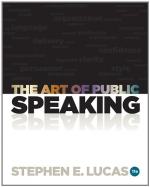III. HOW TO ACQUIRE THE IMAGING HABIT
You remember the American statesman who asserted that “the way to resume is to resume”? The application is obvious. Beginning with the first simple analyses of this chapter, test your own qualities of image-making. One by one practise the several kinds of images; then add—even invent—others in combination, for many images come to us in complex form, like the combined noise and shoving and hot odor of a cheering crowd.
After practising on reproductive imaging, turn to the productive, beginning with the reproductive and adding productive features for the sake of cultivating invention.
Frequently, allow your originating gifts full swing by weaving complete imaginary fabrics—sights, sounds, scenes; all the fine world of fantasy lies open to the journeyings of your winged steed.
In like manner train yourself in the use of figurative language. Learn first to distinguish and then to use its varied forms. When used with restraint, nothing can be more effective than the trope; but once let extravagance creep in by the window, and power will flee by the door.
All in all, master your images—let not them master you.
QUESTIONS AND EXERCISES
1. Give original examples of each kind of reproductive imagination.
2. Build two of these into imaginary incidents for platform use, using your productive, or creative, imagination.
3. Define (a) phantasy; (b) vision; (c) fantastic; (d) phantasmagoria; (e) transmogrify; (f) recollection.
4. What is a “figure of speech”?
5. Define and give two examples of each of the following figures of speech[30]. At least one of the examples under each type would better be original. (a) simile; (b) metaphor; (c) metonymy; (d) synecdoche; (e) apostrophe; (f) vision; (g) personification; (h) hyperbole; (i) irony.
6. (a) What is an allegory? (b) Name one example. (c) How could a short allegory be used as part of a public address?
7. Write a short fable[31] for use in a speech. Follow either the ancient form (AEsop) or the modern (George Ade, Josephine Dodge Daskam).
8. What do you understand by “the historical present?” Illustrate how it may be used (ONLY occasionally) in a public address.
9. Recall some disturbance on the street, (a) Describe it as you would on the platform; (b) imagine what preceded the disturbance; (c) imagine what followed it; (d) connect the whole in a terse, dramatic narration for the platform and deliver it with careful attention to all that you have learned of the public speaker’s art.
10. Do the same with other incidents you have seen or heard of, or read of in the newspapers.




